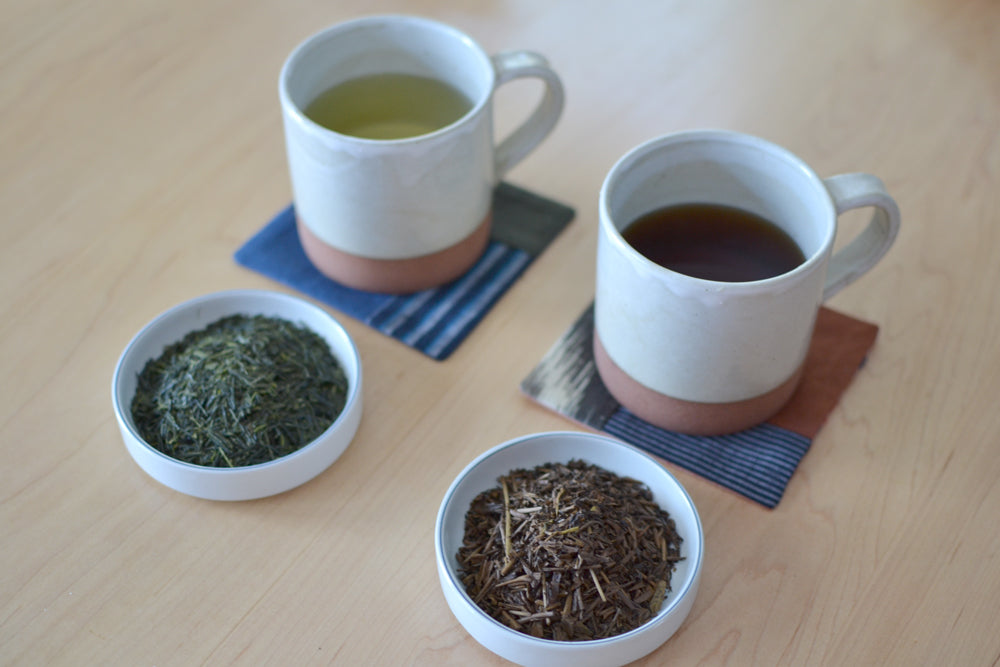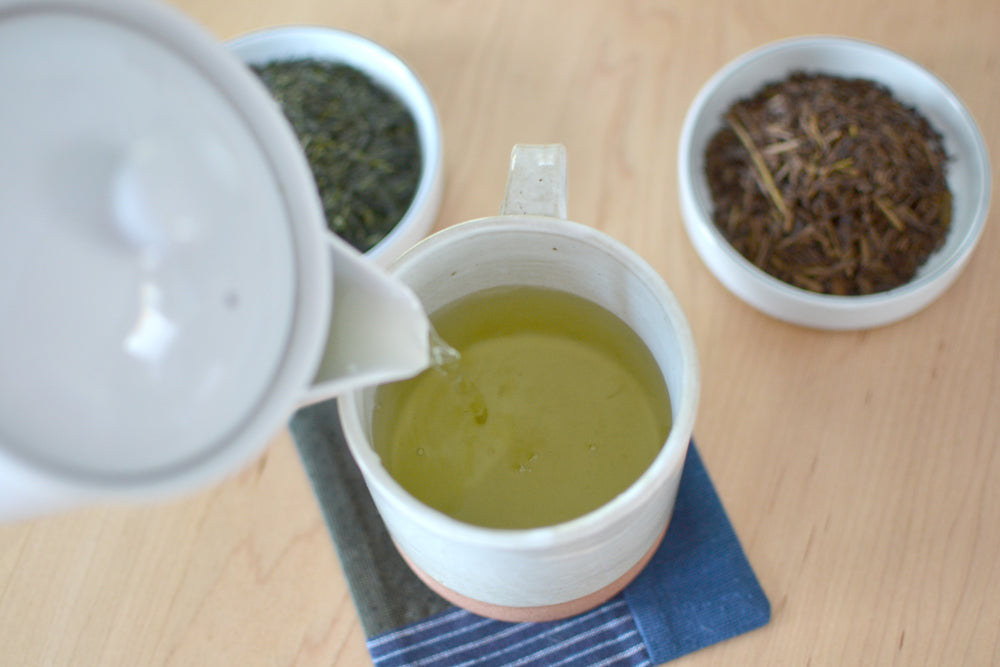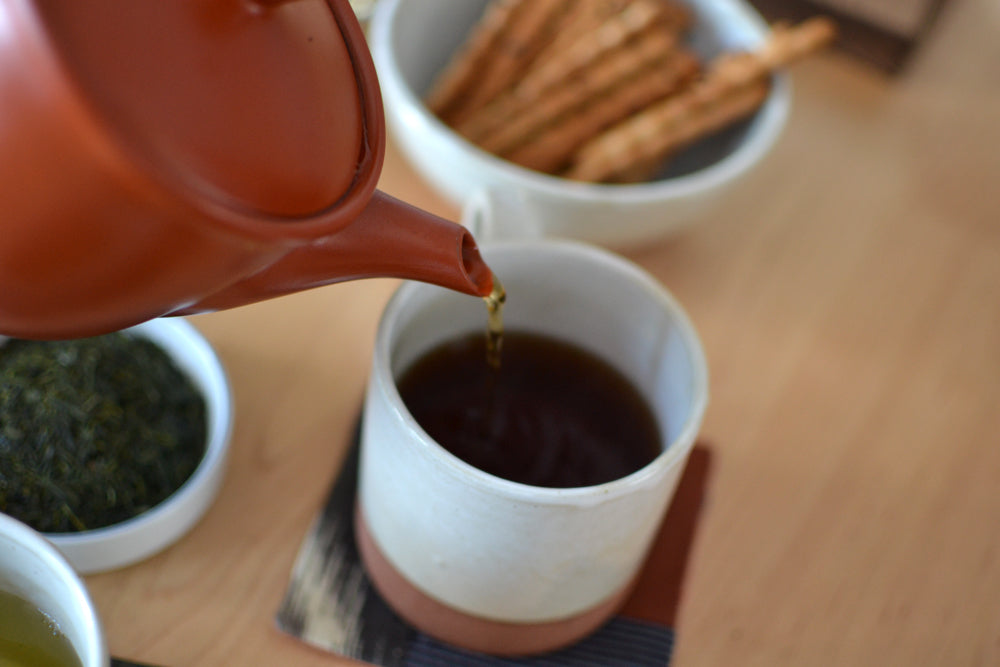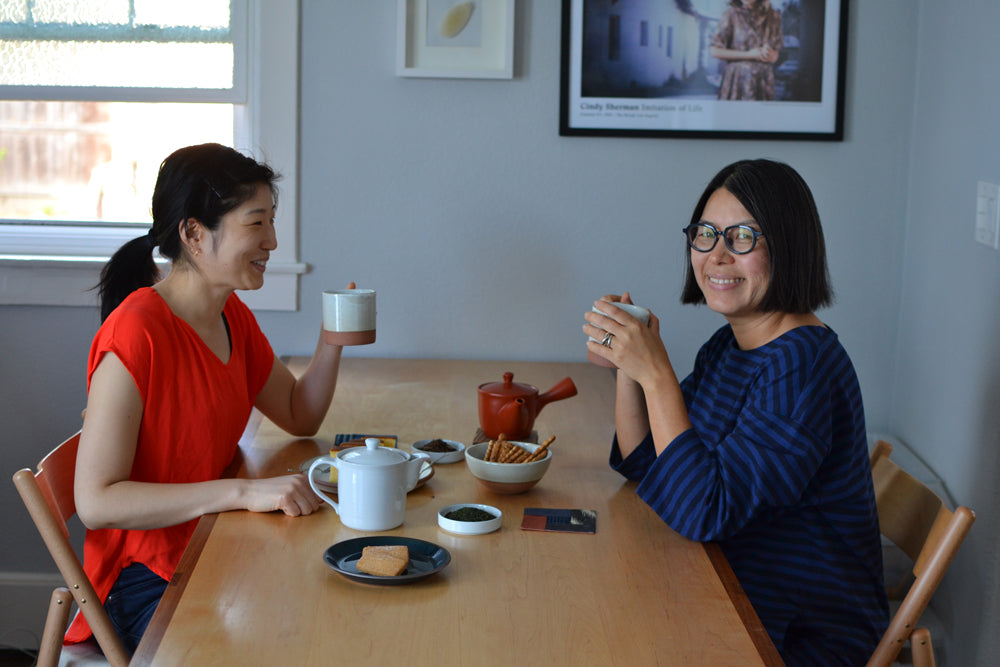 Both sencha and hojicha are common teas that you will come across everywhere in Japan. Unlike matcha or gyokuro (shaded green tea), sencha and hojicha are every day teas, poured into cups all day in homes and offices.
Both sencha and hojicha are common teas that you will come across everywhere in Japan. Unlike matcha or gyokuro (shaded green tea), sencha and hojicha are every day teas, poured into cups all day in homes and offices.
Sencha vs. Hojicha
Sencha, is often simply called "green tea" in English and comes in dried tea leaf form (not to be confused with matcha, which is shaded green tea in powder form). At its best, sencha balances, umami, sweetness, fresh green flavors and astringency. Preparation is key and if you over steep, that balance may be thrown off (I often notice that if over-steeped sencha can become quite bitter).
Hojicha, or fire tea, is made by roasting first or second flush sencha. Hojicha is much more rustic in and flavor in aroma. It often has a smooth, smoky, savory taste that is calming. Tea makers typically roast the coarser, older leaves for hojicha and save the young tips for unroasted sencha varieties. While sencha leaves are green, hojicha leaves are brown (since they have been roasted).
 Sencha
Sencha
Caffeine content
Sencha contains 30mg of caffeine per cup compared to black tea which has 50mg and coffee which has 110-150mg. I've found that sencha provides just enough caffeine in the morning without causing the jitters and subsequent crash that coffee sometimes can. Want a boost in the late afternoon without tossing and turing in the night? Sencha is a great option to keep you alert for the final stretch of the day without interfering with sleep.
Hojicha is even lower in caffeine than sencha. This is mainly for two reasons:
1) Most of the caffeine is in the young tea leaf. Hojicha is mainly comprised of older tea leaves and stems which have less caffeine.
2) The roasting process reduces the effectiveness of the caffeine. The result is that hojicha only has about 7mg of caffeine per cup. That's why many people drink hojicha even after dinner. Because of its low caffeine content, many Japanese children also drink hojicha.
 Hojicha
Hojicha
Preparation
Brew sencha with water that has calmed since boiling (around 175°F). Use 2 tsp for every 8 oz of water. I usually like to bring water up to a boil and let the water sit for about 5 minutes, then pour it into the teapot. Sencha does not require much steeping – 30 seconds to 1 minute should be sufficient. Anymore and the flavor may become too astringent. You may steep your leaves up to two times.
Hojicha is less finicky when brewing because the leaves and stems are a bit more earthy and robust. You can use freshly boiled water and steep up to 2 minutes. You can also resteep until you find the flavor to be too light. I usually steep my hojicha leave up to three times. Sometimes four if I'm too lazy to switch it out.
Whichever one you choose, know that both of these teas are enjoyed casually in Japan. No need for an elaborate tea ceremony, cakes, or special porcelain cups.

If you want to learn more about how to hold those handleless Japanese mugs here's a flashback post from 2010!
We have everything you need to enjoy sencha and hojicha at home. Check out our new teas and teapots from Japan!




Comments (0)
There are no comments for this article. Be the first one to leave a message!